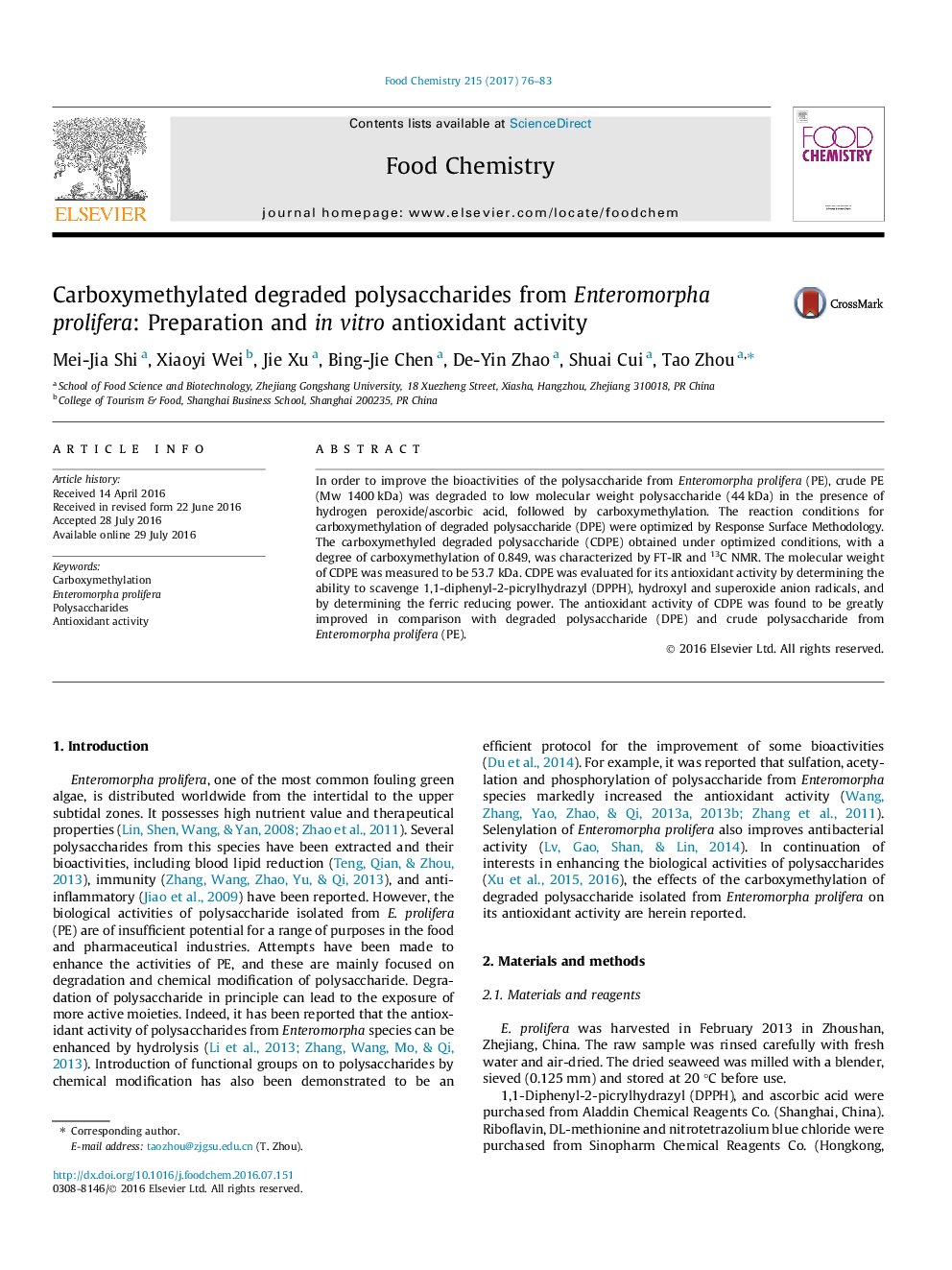| Article ID | Journal | Published Year | Pages | File Type |
|---|---|---|---|---|
| 1183709 | Food Chemistry | 2017 | 8 Pages |
•The polysaccharide from E. prolifera was degraded effectively by H2O2 and Vitamin C.•Degraded polysaccharide was carboxymethylated to improve its antioxidant activity.•Conditions for carboxymethylation were optimized by Response Surface Methodology.•The antioxidant activity of carboxymethylated extract was greatly enhanced.
In order to improve the bioactivities of the polysaccharide from Enteromorpha prolifera (PE), crude PE (Mw 1400 kDa) was degraded to low molecular weight polysaccharide (44 kDa) in the presence of hydrogen peroxide/ascorbic acid, followed by carboxymethylation. The reaction conditions for carboxymethylation of degraded polysaccharide (DPE) were optimized by Response Surface Methodology. The carboxymethyled degraded polysaccharide (CDPE) obtained under optimized conditions, with a degree of carboxymethylation of 0.849, was characterized by FT-IR and 13C NMR. The molecular weight of CDPE was measured to be 53.7 kDa. CDPE was evaluated for its antioxidant activity by determining the ability to scavenge 1,1-diphenyl-2-picrylhydrazyl (DPPH), hydroxyl and superoxide anion radicals, and by determining the ferric reducing power. The antioxidant activity of CDPE was found to be greatly improved in comparison with degraded polysaccharide (DPE) and crude polysaccharide from Enteromorpha prolifera (PE).
